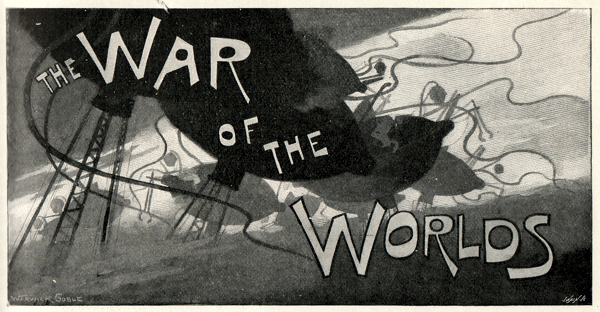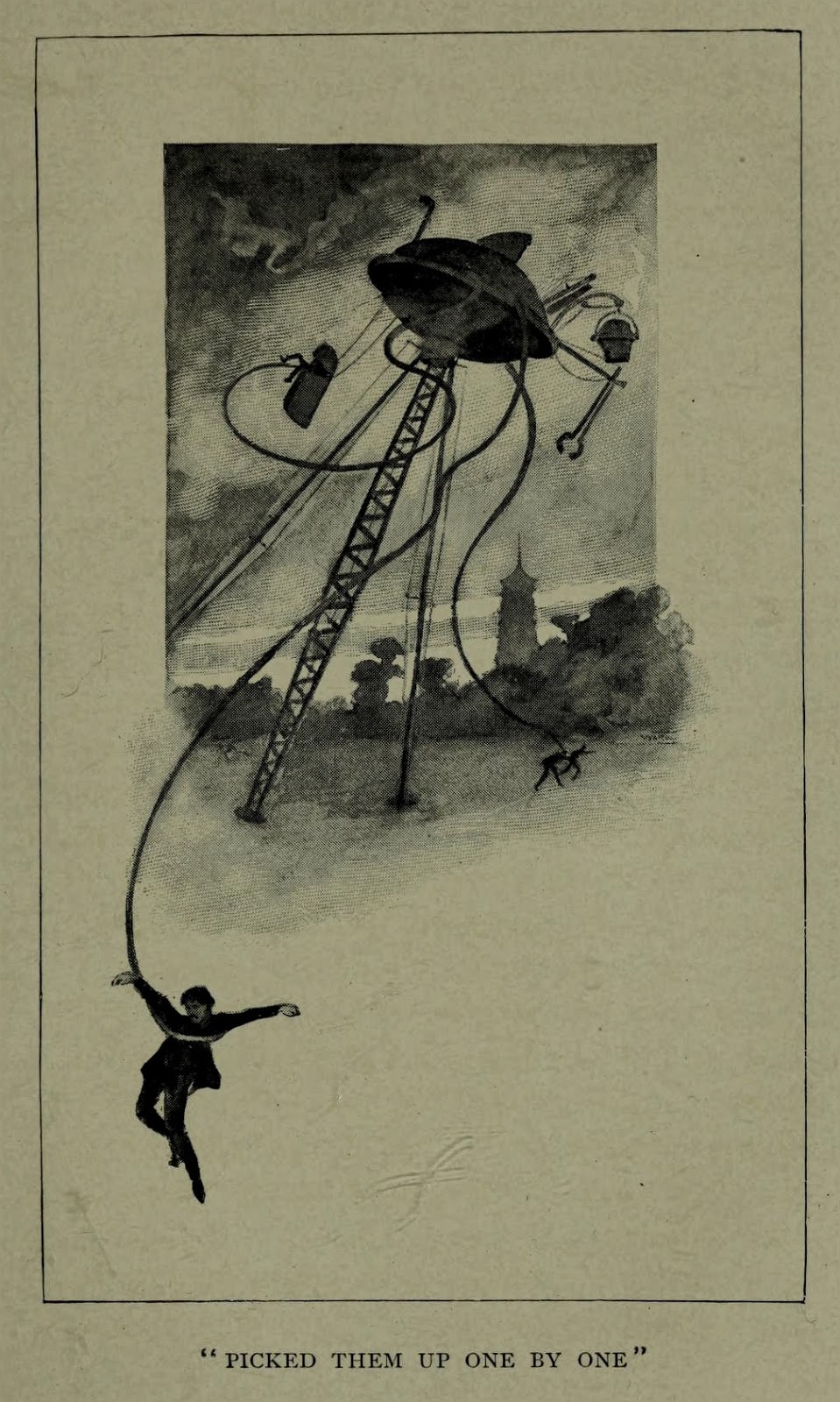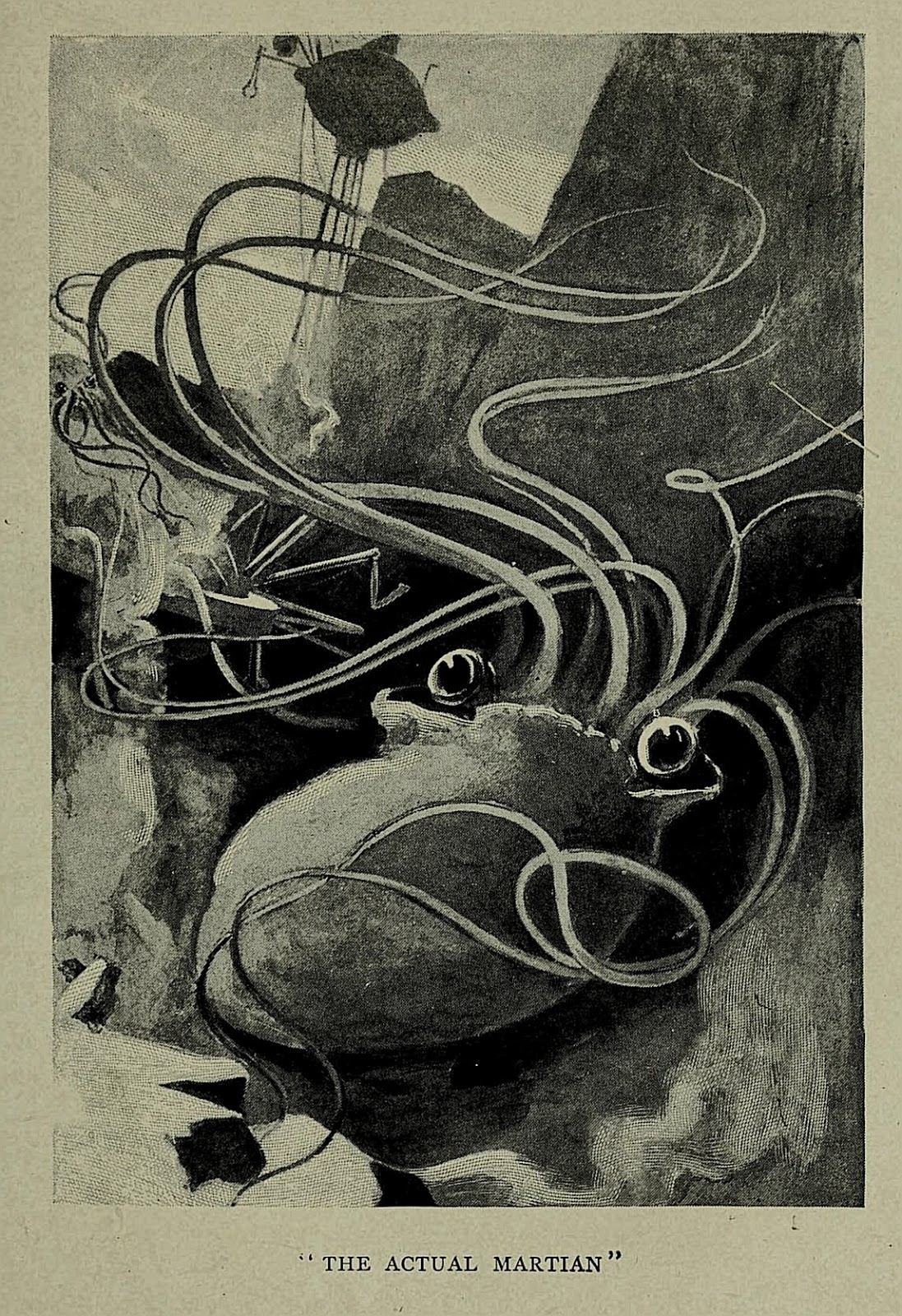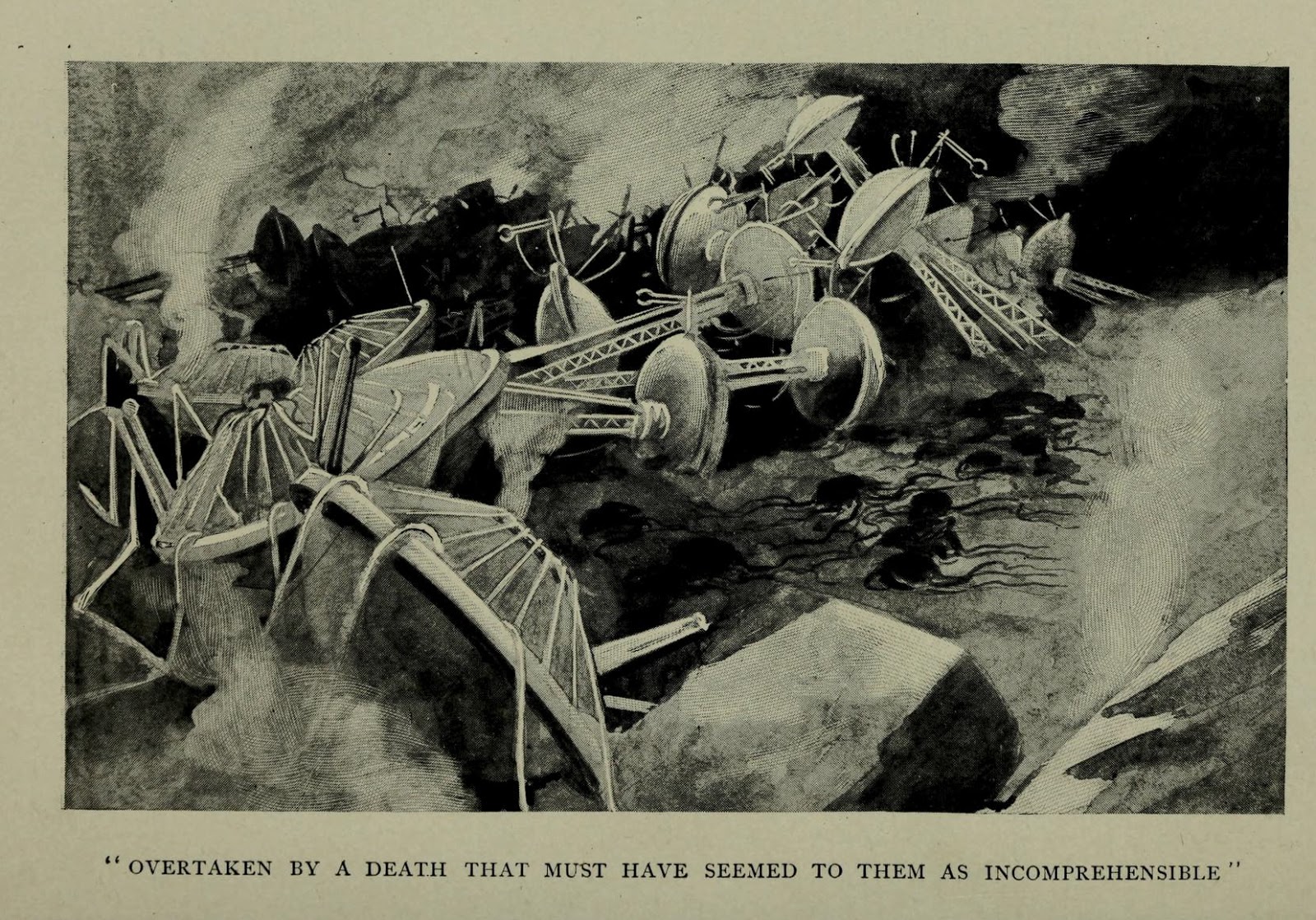
H.G. Wells’ tales of fantastical inventions, never-before-seen beings, time travel, and alien invasion practically cry out for visual and sonic accompaniment. Of all the other artists’ interpretations of his 1898 novel The War of the Worlds, Orson Welles’ infamous Halloween 1938 radio broadcast remains best known, but various illustrators have also brought the story of mercilessly destructive Martians’ arrival on Earth to equally vivid life. Last year, we featured Brazilian illustrator Henrique Alvim Corrêa’s horrifying work for the 1906 edition; today, we go back before The War of the Worlds’ first edition to behold the aliens as rendered by Warwick Goble.

“I’m doing the dearest little serial for Pearson’s new magazine,” Wells wrote to a friend, “in which I completely wreck and sack Woking — killing my neighbours in painful and eccentric ways — then proceed via Kingston and Richmond to London, which I sack, selecting South Kensington for feats of peculiar atrocity.” That dearest little serial, after its 1897 run in Pearson’s Magazine in the U.K. and Cosmopolitan in the U.S., appeared the next year in book form as The War of the Worlds, a common publication procedure for popular English-language novels in the 19th and early 20th century.

“The story is still a bit rough round the edges,” writes sci-fi author John Guy Collick, but “what makes the magazine special are the fantastic illustrations by Warwick Goble. These are the first pictures of the Martians and their tripods and, I think, the best.” He praises their low-tech style and their faithfulness to the text: “in the novel Wells is at pains to point out that the Martian legs are rigid,” not articulated as the films and other illustrations have tended to portray them.” The Martians themselves he considers a “bit too cute, though they are the first attempt to visualise beings from another world,” and these depictions of terror from another planet (more of which you can see here) certainly marked a departure in Goble’s children’s book-oriented career. Even an artist of whimsy has to cause a few nightmares once in a while.

Related Content:
The War of the Worlds on Podcast: How H.G. Wells and Orson Welles Riveted A Nation
Based in Seoul, Colin Marshall writes and broadcasts on cities and culture. He’s at work on a book about Los Angeles, A Los Angeles Primer, the video series The City in Cinema, the crowdfunded journalism project Where Is the City of the Future?, and the Los Angeles Review of Books’ Korea Blog. Follow him on Twitter at @colinmarshall or on Facebook.


Wells opinion of the illustrations as inserted into the book, afterward…
“I recall particularly the illustration of one of the first pamphlets to give a consecutive account of the war. The artist had evidently made a hasty study of one of the fighting-machines, and there his knowledge ended. He presented them as tilted, stiff tripods, without either flexibility or subtlety, and with an altogether misleading monotony of effect. The pamphlet containing these renderings had a considerable vogue, and I mention them here simply to warn the reader against the impression they may have created. They were no more like the Martians I saw in action than a Dutch doll is like a human being. To my mind, the pamphlet would have been much better without them”
I’m glad that the only comment here points out that Wells himself in fact WASN’T at pains to point out how the machines where rigid and not articulated and in fact was trying to emphasise exactly the opposite and how dissapointed he was with these illustrations for not realising that, that he felt the need to add an extra verse into later additions of the book to highlight how out of touch these illustrations where from his vision.
It’s always amusing to me when the “experts” get it wrong! One day someone will learn to at least apply a basic amount of research to articls like this before publishing them given that this information really isn’t difficult to find (In fact all you need to do is read any modern publicatin of the back to see the paragraph above to learn Mr Wells’ oppinions on the matter).
Hi, thanks for putting these pictures up. I have an original set of Pearson’s with these in, but am struck by how much clearer your images are. Did you process them after scanning, and if so, how? Would love to know to enhance my images. Thanks! Matt
Original Pearsons….very nice…I have the Cosmopolitan set. Never tried to photocopy anything.